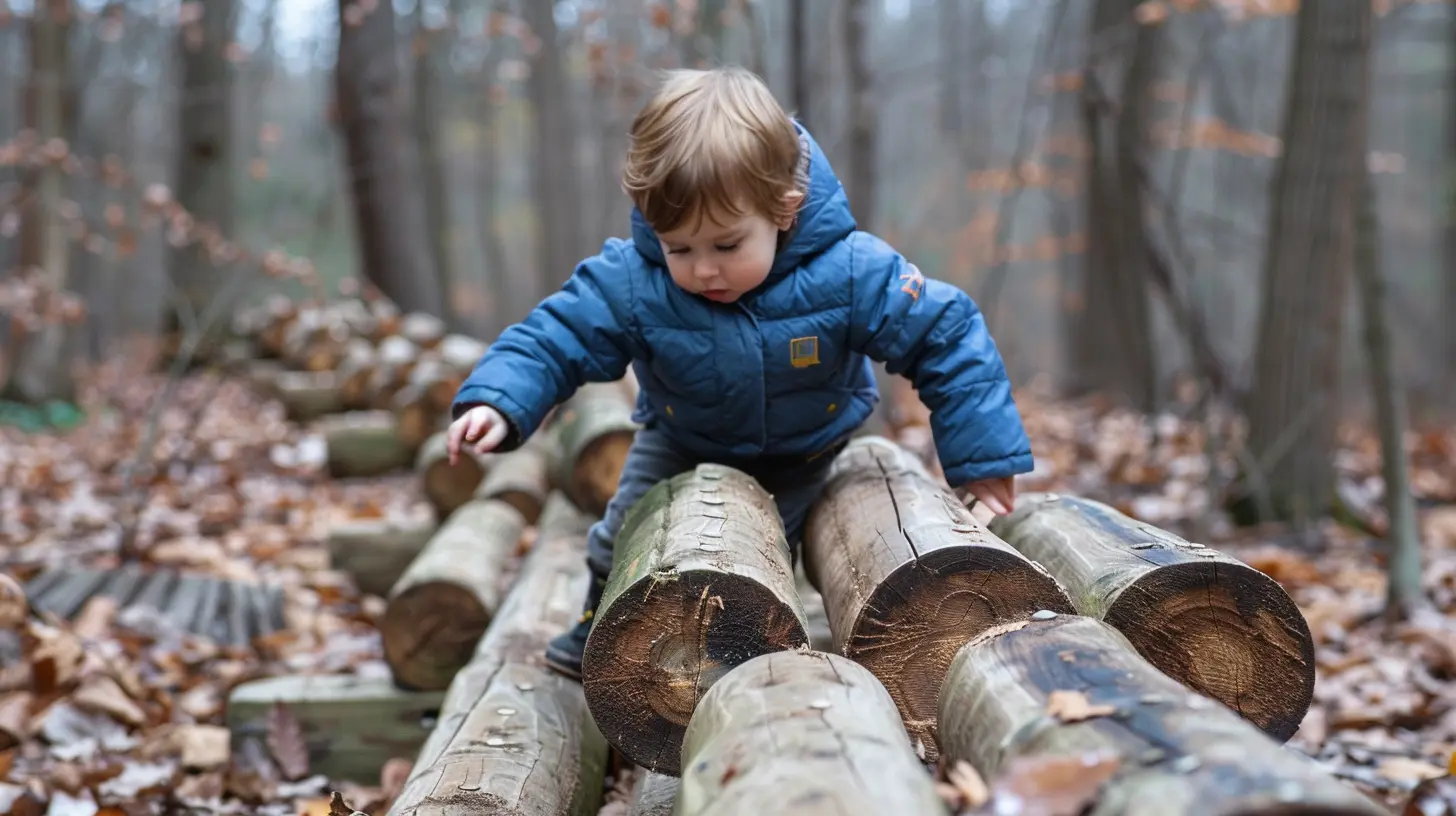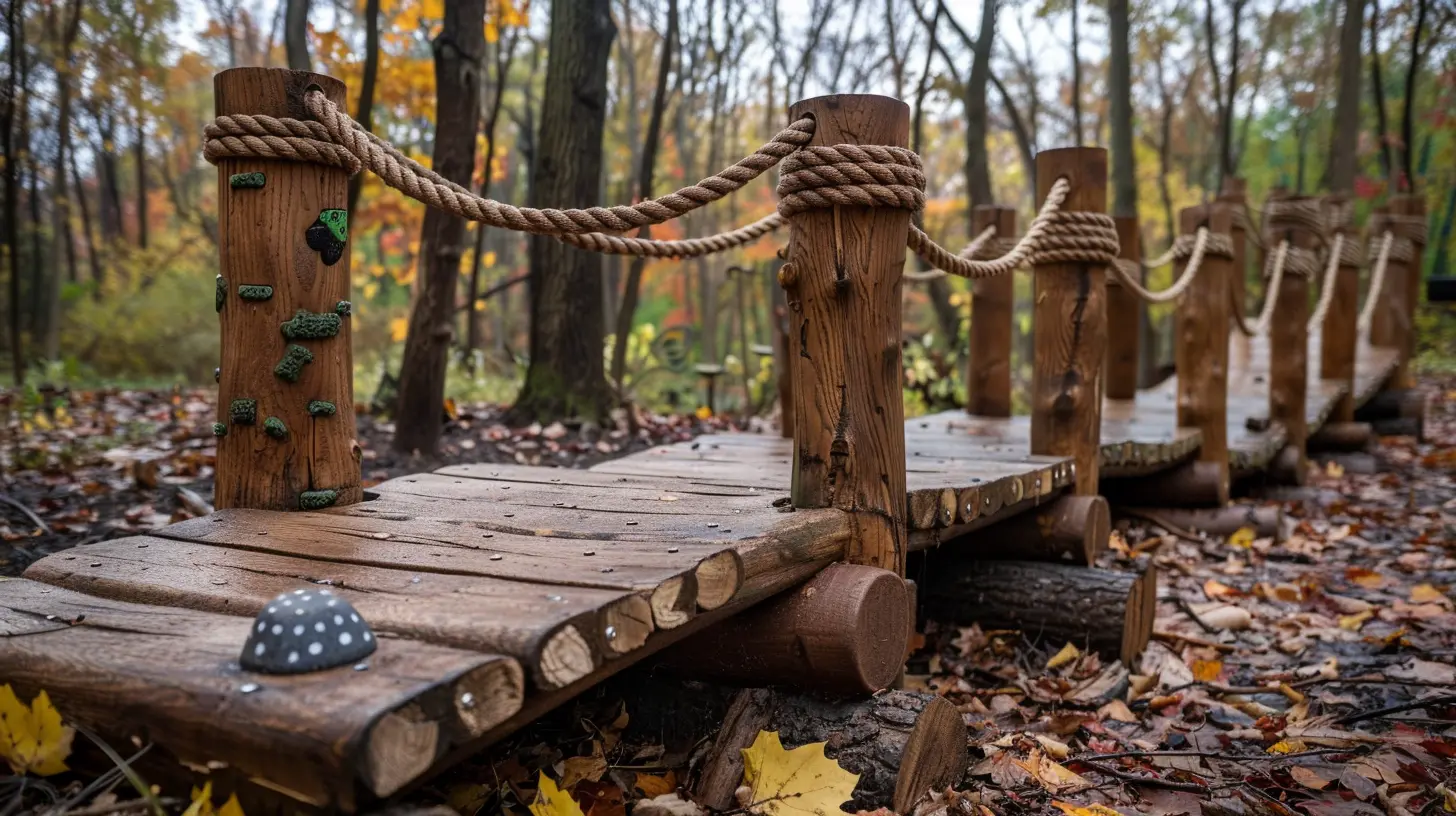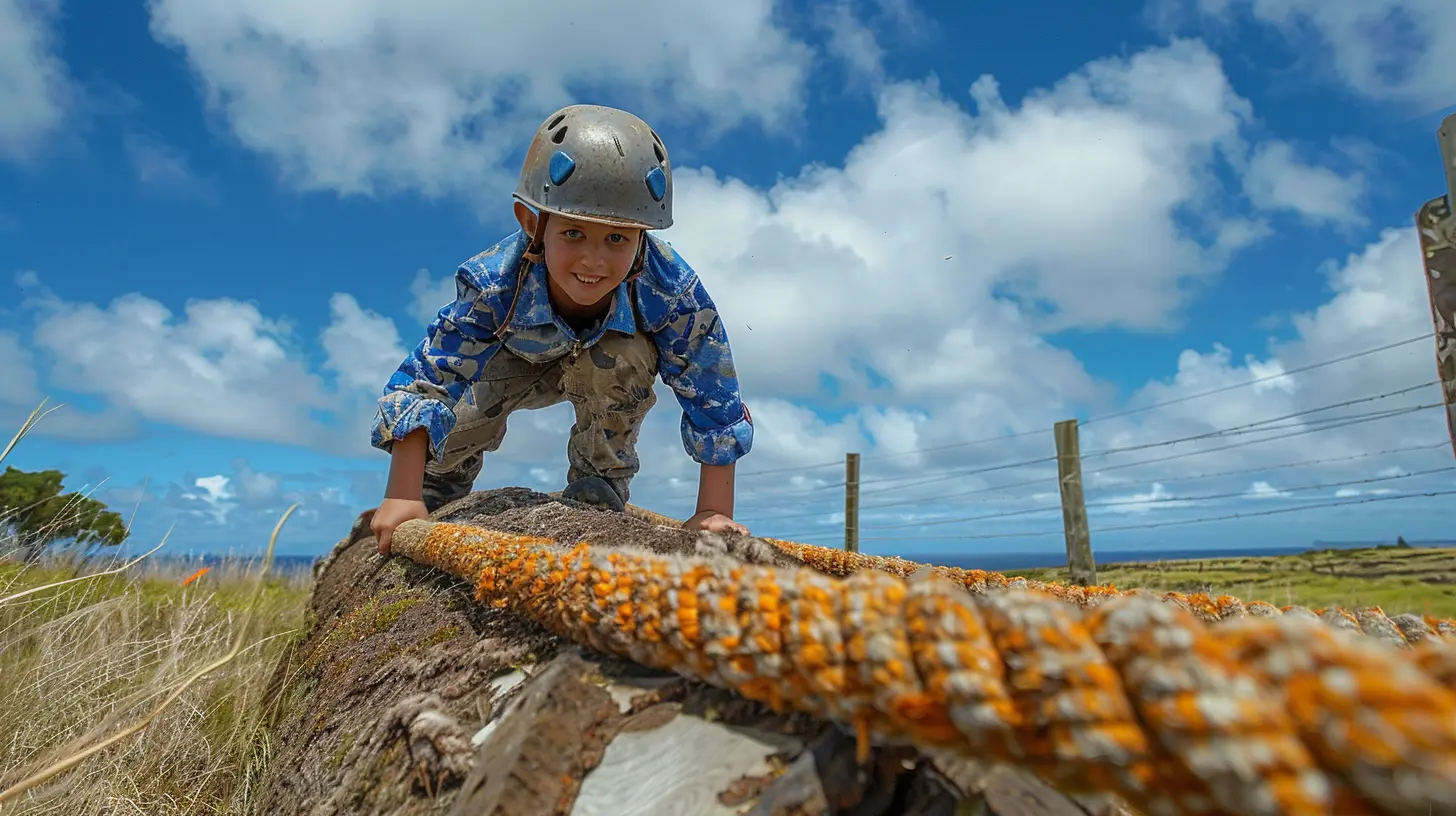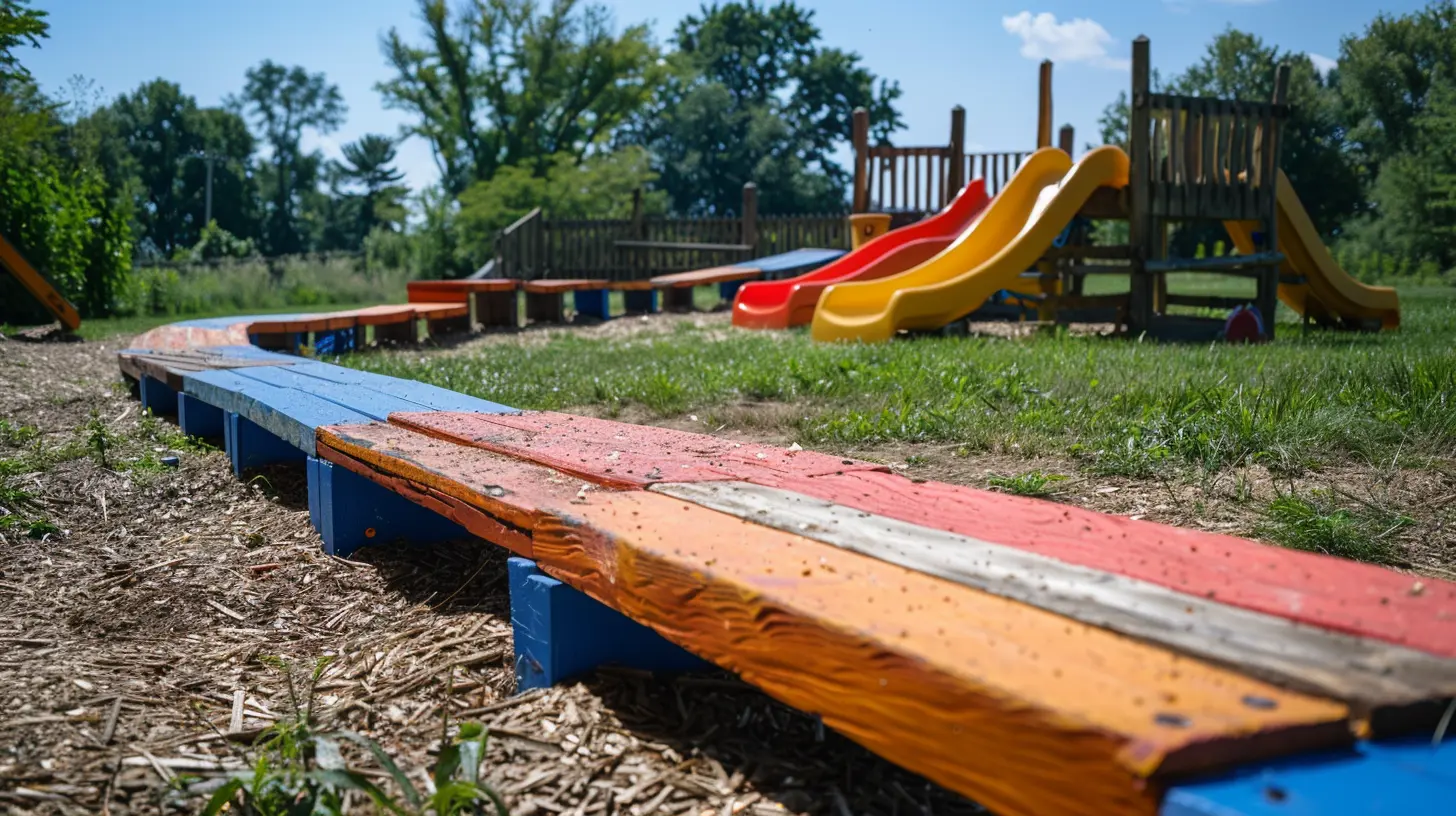Building Confidence with Outdoor Obstacle Courses
4 July 2025
As parents, we all want our kids to grow up strong, resilient, and ready to handle life’s curveballs. But let’s be honest—it can be tough to figure out the best way to help them build those inner muscles of confidence and courage. One surprisingly fun and super effective tool? Outdoor obstacle courses.
Yeah, you heard me right. Those climbing walls, balance beams, rope swings, and monkey bars aren’t just playground fun—they’re confidence-builders in disguise. When kids tackle an obstacle course, they’re also working on self-trust, problem-solving, and grit. And the best part? They don’t even realize they're doing it.
Alright, let’s dive into how outdoor obstacle courses can help build confidence in kids—and how you can set one up at home without turning your backyard into a boot camp.
Why Confidence Matters More Than Ever
Confidence isn’t about being loud or always taking the lead—it’s about believing in yourself enough to try, even if you might fail. And let’s face it: the world can be a pretty overwhelming place for kids.Whether it’s facing social situations at school, trying something new, or bouncing back from mistakes, confidence plays a huge role in how a child copes with challenges. Confident kids are more likely to speak up, take healthy risks, and recover from setbacks. They’re not afraid to stumble, because they know they can get back up again.
And that, my friend, is exactly what obstacle courses teach—one jump, crawl, and climb at a time.
How Obstacle Courses Build Confidence
So, what’s the magic behind these backyard battlegrounds? It’s all about action, achievement, and doing hard things that don’t feel too hard...because they’re wrapped up in fun.1. They Encourage Risk-Taking in a Safe Space
Kids need to take risks—it helps them grow. But those risks have to be the right kind. Obstacle courses are full of these “safe risks.” Climbing a rope? Balancing across a log? These are physical and mental challenges that push kids just past their comfort zone without putting them in danger.The feeling of “I did it!” after climbing over a wall that looked too high or swinging across a gap? That sticks.
2. They Build Physical Strength—Which Translates to Mental Strength
When kids realize, “Hey, I can actually carry my body across this net,” or “I didn’t fall off the beam,” they start to believe in their bodies and their abilities. And that physical confidence spills over into emotional confidence. It’s like a chain reaction.Plus, physical activity releases endorphins. That means your child walks away from an afternoon on the obstacle course not just more confident—but genuinely happier, too.
3. They Teach Persistence and Problem-Solving
Obstacle courses aren’t just about muscles—they’re little puzzles. Where do I put my foot next? How do I get over this wall? What if I fall?Every time your kid figures something out, even after a few failed tries, they’re learning grit. They’re learning that failure isn’t the end—it’s just part of the process.
4. They Give a Sense of Accomplishment
There’s nothing quite like the buzz of smashing a challenge you weren’t sure you could handle. Kids get to experience that when they run an obstacle course, especially if they finish something they couldn’t do the week before.Small wins build big confidence. And obstacle courses are full of opportunities for those wins.
Creating a Backyard Obstacle Course (Even If You’re Not Handy)
You don’t need to be a Pinterest parent or have a massive yard to build a confidence-boosting setup. You just need a little creativity, some basic supplies, and a mindset that says, “Good enough is great.”1. Start Simple
Don’t go overboard. Start with 3-4 basic stations. Think crawling under something (like a tarp or a low table), walking across something (a 2x4 makes a perfect balance beam), climbing over something (stack a few cushions or crates), and maybe a jump or rope swing if you’ve got space.Keep it safe! Supervision is key, especially for younger kids.
2. Use What You Have
Cardboard boxes, pool noodles, laundry baskets, jump ropes—you’d be amazed what kind of course you can build with stuff from your garage. Think of it as a fun scavenger hunt with your kid: “What can we use to make this more fun?”3. Make It Adjustable
Let the kids help design it! Ask questions like: What was the hardest part? What should we change? Giving them some ownership doesn’t just make it more fun—it makes them more invested. And guess what? That’s another confidence boost.
Turning Play Into a Confidence Routine
Obstacle courses are a blast, but they’re even more powerful when they become part of your child’s regular routine.1. Create Little Goals
Maybe it’s finishing the course faster. Maybe it’s making it across the balance beam without falling. Help your child set small, attainable goals, and celebrate when they reach them. Even better? Track their progress with a little “ninja chart” or checklist. Trust me—they’ll feel like superheroes.2. Encourage Friendly Competition (But Not Pressure)
Got siblings or friends over? Turn the course into a fun challenge—but skip the pressure. Keep the focus on personal improvement, teamwork, and fun. “Can you beat your own time?” or “Can you help your friend across the logs?” works way better than “Who’s the fastest?”3. Join In!
You don’t have to be an athlete to join the fun. Trying the obstacle course yourself shows your kids that it’s okay to look silly, fail, and keep going. Plus, you’ll bond like crazy. And hey—burn a few calories while you’re at it.The Social Confidence Boost
Confidence isn’t just about believing in yourself when nobody’s watching. It’s also about interacting with others confidently. And obstacle courses can help with that, too.1. Team Challenges Rock
Set up relay races, partner challenges, or group problem-solving tasks. When kids work together to get through a course, they learn cooperation, communication, and leadership—it’s like a trust fall, but way more fun.2. Public Praise Builds Private Confidence
When you cheer your child on (and even let them hear you brag to other adults), you’re reinforcing that they’re capable and valued. Just remember to praise the effort, not just the success. “You didn’t give up even when it was hard!” goes a lot further than “You're so fast!”Beyond the Backyard: Obstacle Course Programs and Events
If you’re not up for DIY-ing an obstacle course, no worries—the world’s full of awesome programs that do it for you.1. Ninja Warrior-Inspired Gyms
More and more gyms and play centers are offering ninja classes for kids. These are basically indoor obstacle courses with some serious cool factor. They’re fun, challenging, and full of other kids to cheer on (and be inspired by).2. Adventure Races and Mud Runs
Yup, kids can do these too! There are family-friendly obstacle course events popping up all over. These aren’t just great for building grit—they make for seriously fun family memories.3. Summer Camps with Obstacle Elements
Look for camps that incorporate team-building games, ropes courses, or even zip lines. They help kids build skills and confidence away from screens and school stress.Pro tip: Always ask how the program handles nervous or hesitant kids. The goal is gentle encouragement, not forced participation.
What to Say When They’re Scared (Because They Will Be)
Let’s get real: building confidence isn’t always a straight line. Sometimes you’ll hear the dreaded: “I can’t do it.” So, what do you do?- Don’t rush in to “fix” it. Stay calm and upbeat.
- Try, “That wall looks huge, huh? Want to talk about it?”
- Remind them of past wins: “Remember when you couldn’t do the swing, and now you fly over it?”
- Offer partnership: “Wanna try it together?”
- And always, always praise the courage to try, even if they don’t finish.
Final Thoughts: Let Kids Surprise You
Here’s the truth: kids are insanely capable. We just have to give them the space, tools, and little nudges to show it. Outdoor obstacle courses do exactly that. They let kids climb their own mountains, swing over their doubts, and jump into self-belief.So, set up that course—even if it's just a few cones and a string. Cheer wildly. Watch them fall and get back up. And enjoy the moment they realize: “I can actually do this.”
Because that, right there—that’s confidence being built, one obstacle at a time.
all images in this post were generated using AI tools
Category:
Outdoor ActivitiesAuthor:

Zelda Gill
Discussion
rate this article
2 comments
Xylo Nguyen
Thank you for sharing such inspiring insights! Outdoor obstacle courses are a fantastic way to build confidence in our children. Watching them conquer challenges in nature truly fosters resilience and self-belief. Absolutely love this!
November 21, 2025 at 5:59 AM

Zelda Gill
Thank you for your kind words! I'm glad you found the insights inspiring. Outdoor obstacle courses indeed play a vital role in fostering confidence and resilience in children.
Paula McEachern
Obstacle courses: where my kids learn to conquer fears and I learn to hide behind a tree, sipping coffee. Who knew 'falling with style' could double as a parenting hack? Just remember, confidence is key—along with a good first aid kit!
July 11, 2025 at 4:09 AM

Zelda Gill
Absolutely! Outdoor obstacle courses are a fantastic way for kids to build confidence while parents enjoy a moment of peace. Just like you said, confidence and a first aid kit go hand in hand!


